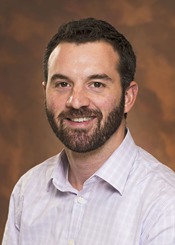Program Information
A Validation Study of a Commercially Available Software Package's Absorbed Dose Estimates in a Physical Phantom
M Supanich1*, J Siegelman2 , (1) Rush University Medical Center, Chicago, IL, (2) Brigham and Women's Hospital Harvard Medical School, Boston, MA
Presentations
SU-F-18C-8 Sunday 4:00PM - 6:00PM Room: 18CPurpose:
This study assesses the accuracy of the absorbed dose estimates from CT scans generated by Monte Carlo (MC) simulation using a commercially available radiation dose monitoring software program.
Methods:
Axial CT studies of an anthropomorphic abdomen phantom with dose bores at a central location and 4 peripheral locations were conducted using a fixed tube current at 120 kV. A 100 mm ion chamber and a 0.6 cc ion chamber calibrated at diagnostic energy levels were used to measure dose in the phantom at each of the 5 dose bore locations. Simulations using the software program's Monte Carlo engine were run using a mathematical model of the anthropomorphic phantom to determine conversion coefficients between the CTDIvol used for the study and the dose at the location of the dose bores. Simulations were conducted using both the software's generic CT beam model and a refined model generated using HVL and bow tie filter profile measurements made on the scanner used for the study.
Results:
Monte Carlo simulations completed using the generalized beam model differed from the measured conversion factors by an absolute value average of 13.0% and 13.8% for the 100 mm and 0.6 cc ion chamber studies, respectively. The MC simulations using the scanner specific beam model generated conversion coefficients that differed from the CTDIvol to measured dose conversion coefficients by an absolute value average of 7.3% and 7.8% for the 100 mm and 0.6 cc ion chamber cases, respectively.
Conclusion:
A scanner specific beam model used in MC simulations generates more accurate dose conversion coefficients in an anthropomorphic phantom than those generated with a generalized beam model. Agreement between measured conversion coefficients and simulated values were less than 20% for all positions using the universal beam model.
Contact Email:


